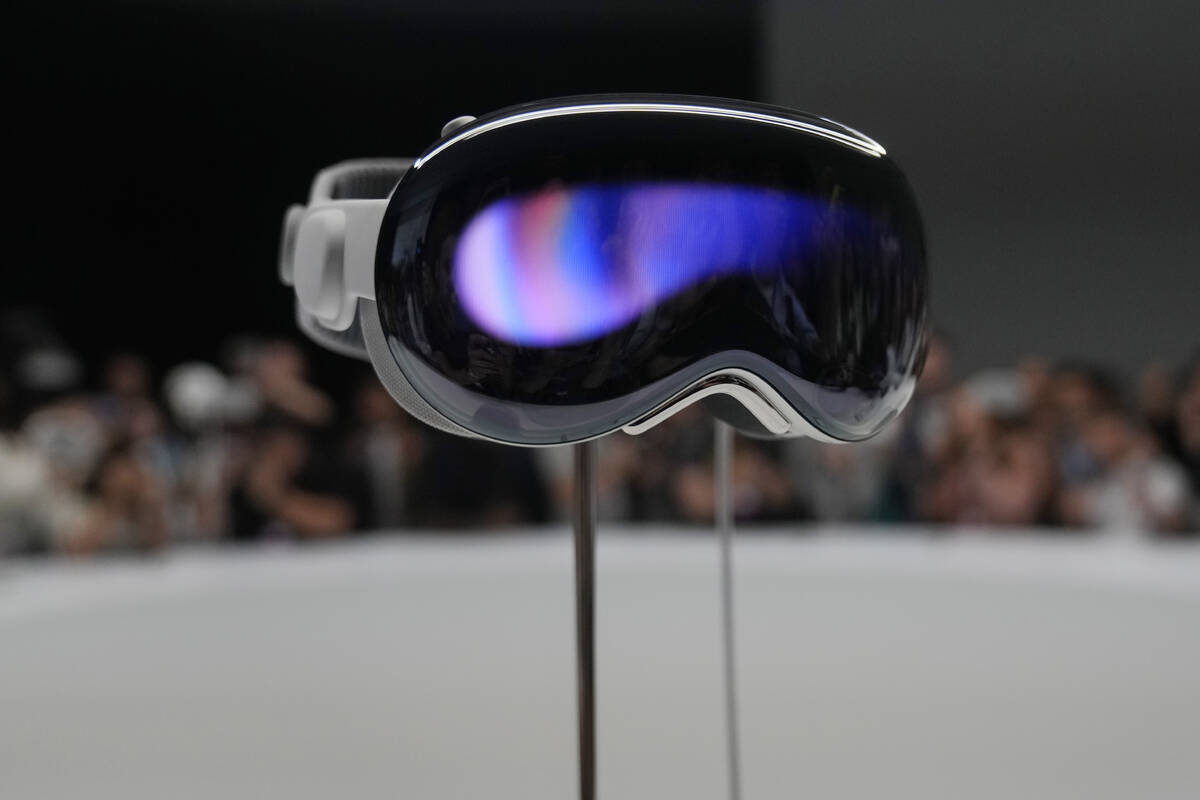VICTOR JOECKS: How Apple Vision Pro makes the case for God
Apple’s newest gadget makes a powerful case for God’s existence.
You can now buy an Apple Vision Pro. It’s an expensive headset worn over your eyes that combines altered and virtual reality. Apple markets it as a “revolutionary spatial computer.” Instead of seeing them on a desktop or phone screen, apps float in front of you. Forget using a traditional mouse. You can control and manipulate programs using your eyes, hands and voice.
“Built upon decades of Apple innovation, Vision Pro is years ahead and unlike anything created before — with a revolutionary new input system and thousands of groundbreaking innovations,” Apple CEO Tim Cook said.
The theme of invention comes up repeatedly in Apple’s marketing. The Vision Pro uses a “revolutionary operating system” and boasts “unrivaled innovation in hardware.”
Set aside your thoughts on this technology, although put me in the “terrified it will entertain people into isolation and misery” category. Putting 23 million pixels into a headset doesn’t happen by accident. Its cameras, sensors and microphones are engineering marvels. Transforming purified silicon into a computer chip is a long and delicate process. Something this detailed and functional could only be designed.
Yet many people believe that’s the origin story of something much more complex — human beings. However impressed you are with any modern technology, you should be more impressed by the human body. Adults have an estimated 28 trillion to 36 trillion cells. DNA contains biological information that directs physical development. The brain has 100 billion neurons that make 100 trillion connections.
Perhaps most amazingly of all, humans reproduce. A fertilized egg grows and develops based on information contained in a baby’s unique DNA. This would be like your cellphone mating with your spouse’s cellphone and producing a tiny third cellphone that grows over time. Despite decades of innovation by millions of people, that level of technology isn’t close to existing.
Even some evolutionists acknowledge organisms such as plants and people couldn’t come about by accident. “Chance is not a solution, given the high levels of improbability we see in living organisms, and no sane biologist ever suggested that it was,” atheist Richard Dawkins wrote in his book “The God Delusion.”
He argues that the alternative to design is natural selection. That does occur within species. But evolutionists want to claim it’s the undirected mechanism that moved life from single-celled organisms to humans.
Natural selection “breaks the problem of improbability up into small pieces,” he wrote. “Each of the small pieces is slightly improbable, but not prohibitively so.”
Consider two problems. First, Dawkins doesn’t dismiss the issue of apparent design. He transfers it to something even more complex. An analogy. Say your friend argues that computer chips came about without a designer. You point out their incredible complexity. His counter is to note it came from a chip factory. That doesn’t dismiss design as a cause. It obligates him to describe why the entire factory wasn’t designed. That’s harder than explaining away design in a single chip.
Second, the likelihood of those “small pieces” happening is prohibitively improbable. As Stephen Meyer details in “Signature in the Cell,” what happens at the cellular level isn’t like building with Legos. What goes on with amino acids and proteins is detailed and precise.
The chance “of producing the suite of proteins necessary to service a minimally complex cell by chance alone … completely dwarfs the probabilistic resources of the whole universe,” Meyer found.
Yes, that’s prohibitive.
Whether you’re wearing the Vision Pro or not, you should see the conclusion. Both the creation of complex machines and human beings requires a designer.
Contact Victor Joecks at vjoecks@reviewjournal.com or 702-383-4698. Follow @victorjoecks on X.





























